A taut line hitch is a self-tightening knot useful for holding loads. While working with a load, the hitch can easily be tightened or loosened.
Taut line hitches are primarily used outdoors for camping, climbing trees, and boating. They are also ideal for securing loads.
There are six knots similar to the taut line hitch:
- Rolling hitch
- Midshipman’s hitch
- Munter Hitch
- Girth Hitch
- Buntline Hitch
- Trucker’s Hitch
- Farrimond Friction Hitch
What Is A Taut Line Hitch?
A taut line hitch is a knot that tightens when pulled and holds tight when holding a heavy load. The knot slips easily along the rope to loosen or tighten when needed. They are most useful for lines that need adjusting when working with them. Adjusting the knot while the rope is in use maintains tension.
Taut line hitches are rolling hitches. Yet, they have an extra half hitch around the rope’s standing part, making them different.
These self-tightening knots also go by these four alternative names:
- Adjustable hitch
- Tent-line hitch
- Tent hitch
- Rigger’s hitch
How To Tie A Taut Line Hitch
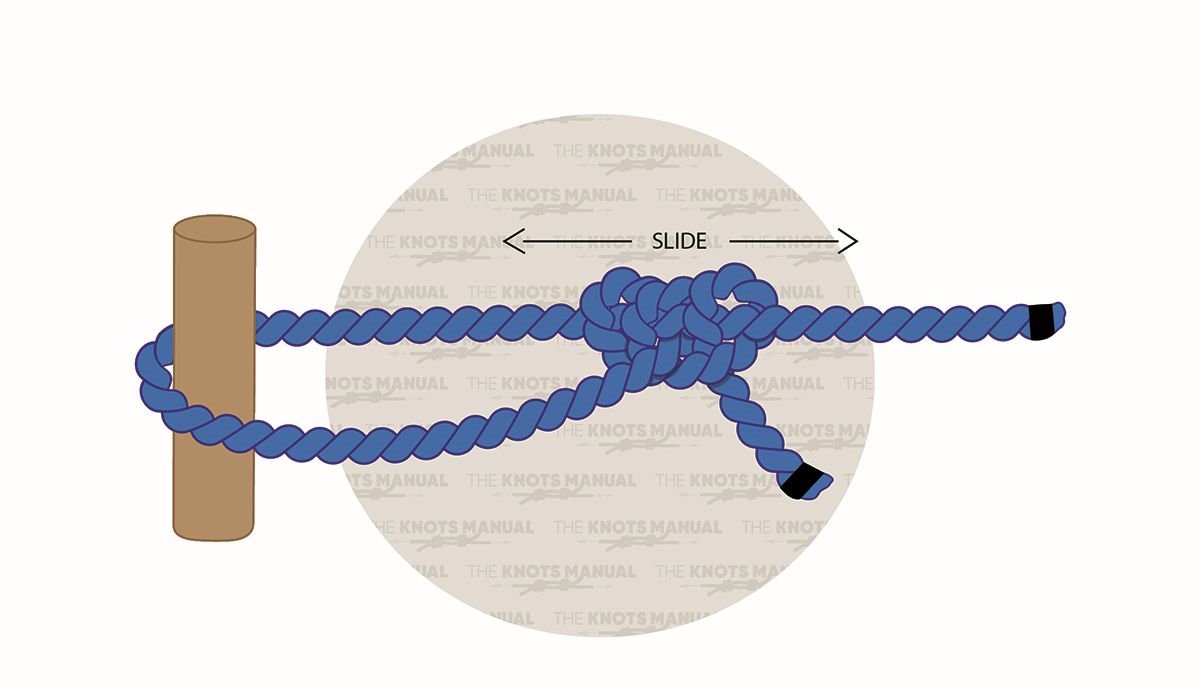
Follow the steps below to learn how to tie, tighten, and loosen a taut line hitch.
Step 1:
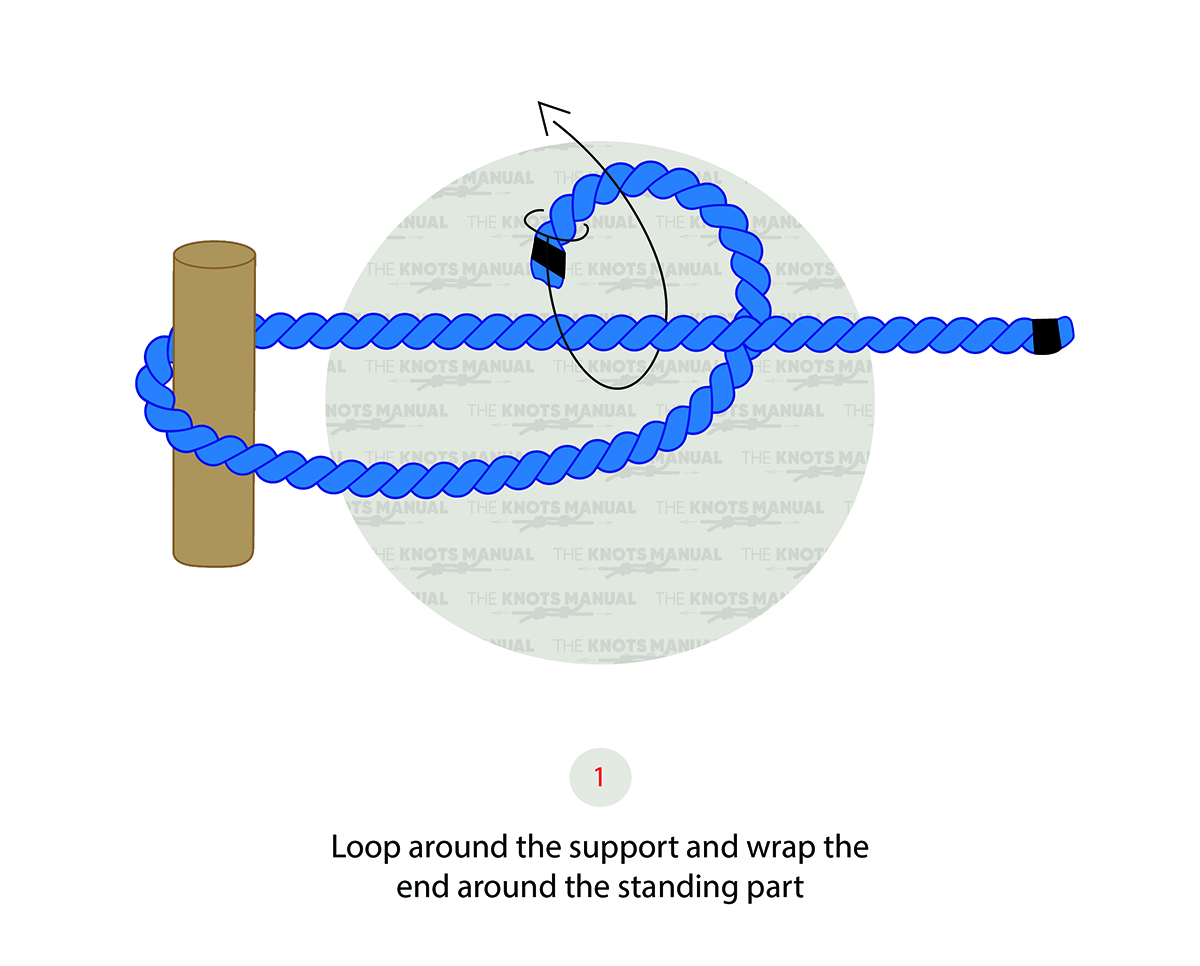
Wrap the working end around the support and then around the rope’s standing part.
Step 2:
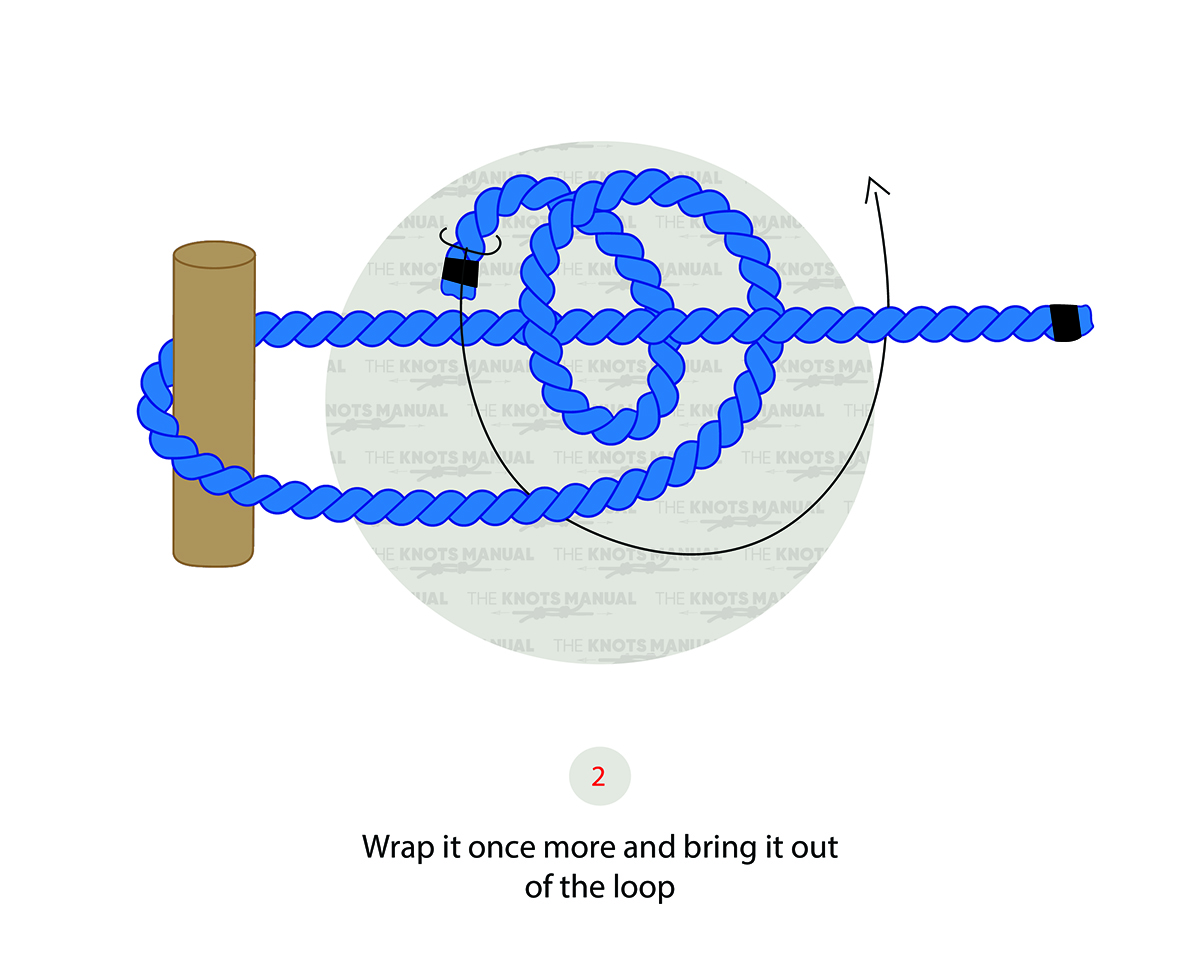
Wrap the working end around the standing end again, starting inside the loop. Then, pull the end of the rope upwards so it’s outside the loop.
Step 3:
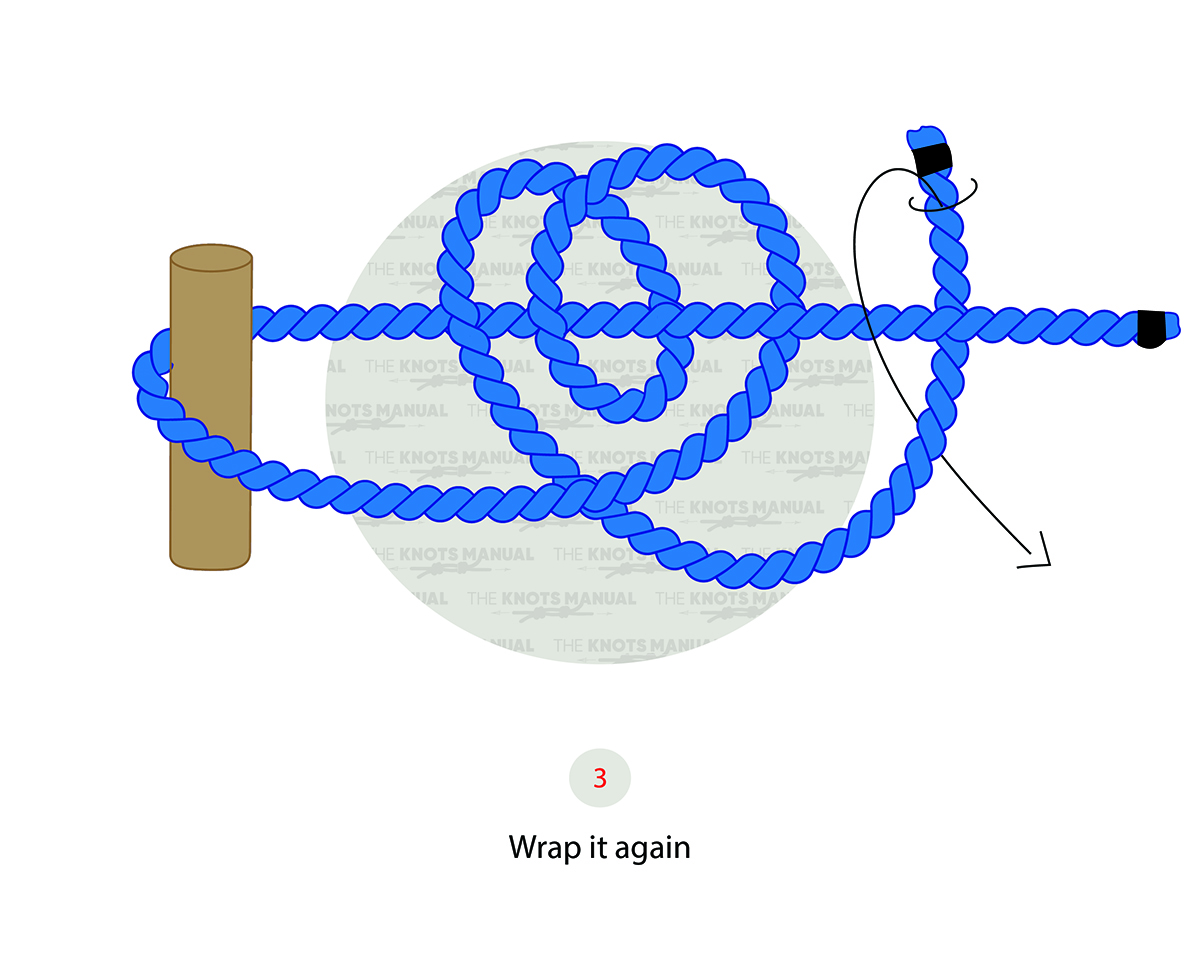
Wrap the working end around the standing end again, outside the original loop.
Step 4:
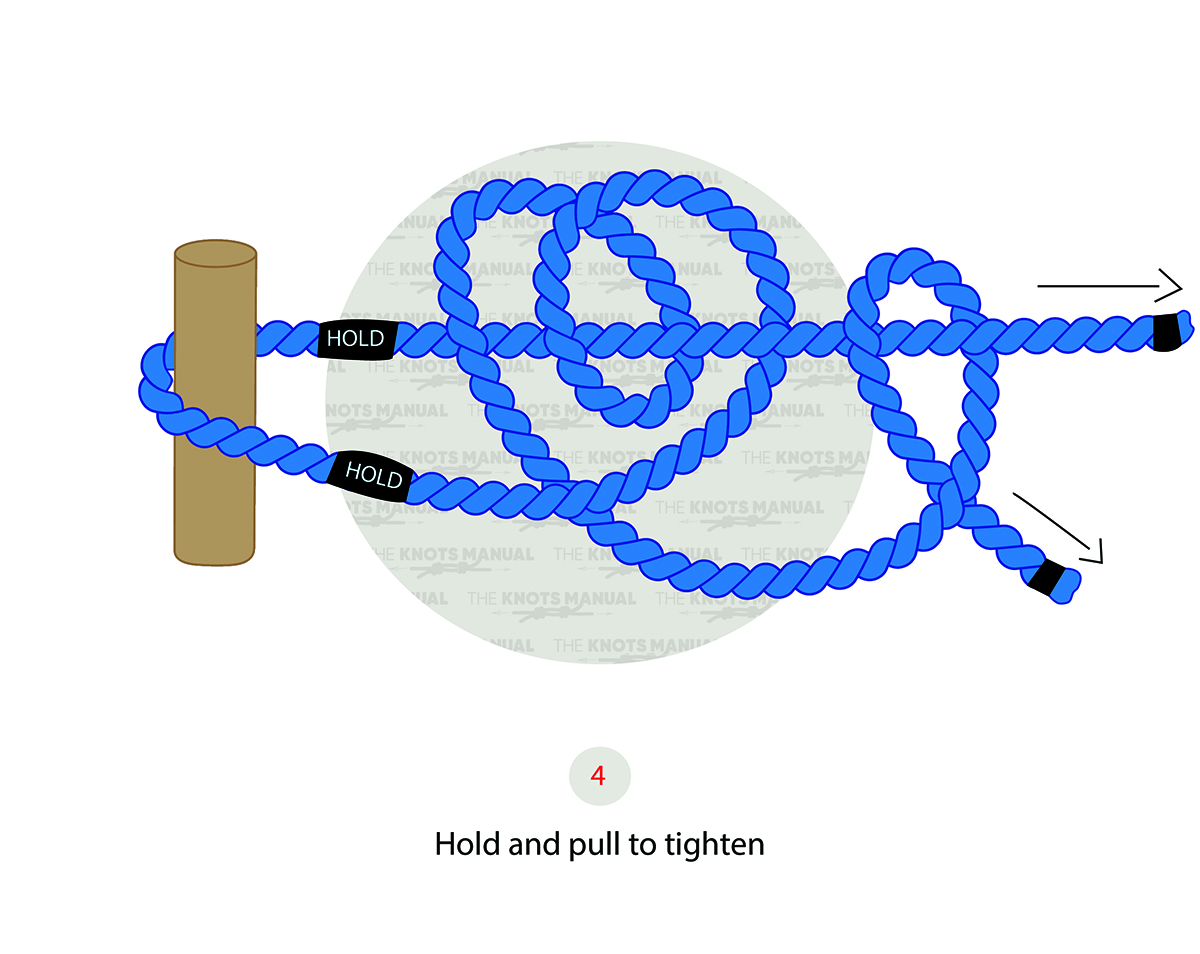
Hold the standing part on either side of the support with one hand. With the other hand, pull both ends of the rope to tighten the knot.
Step 5:
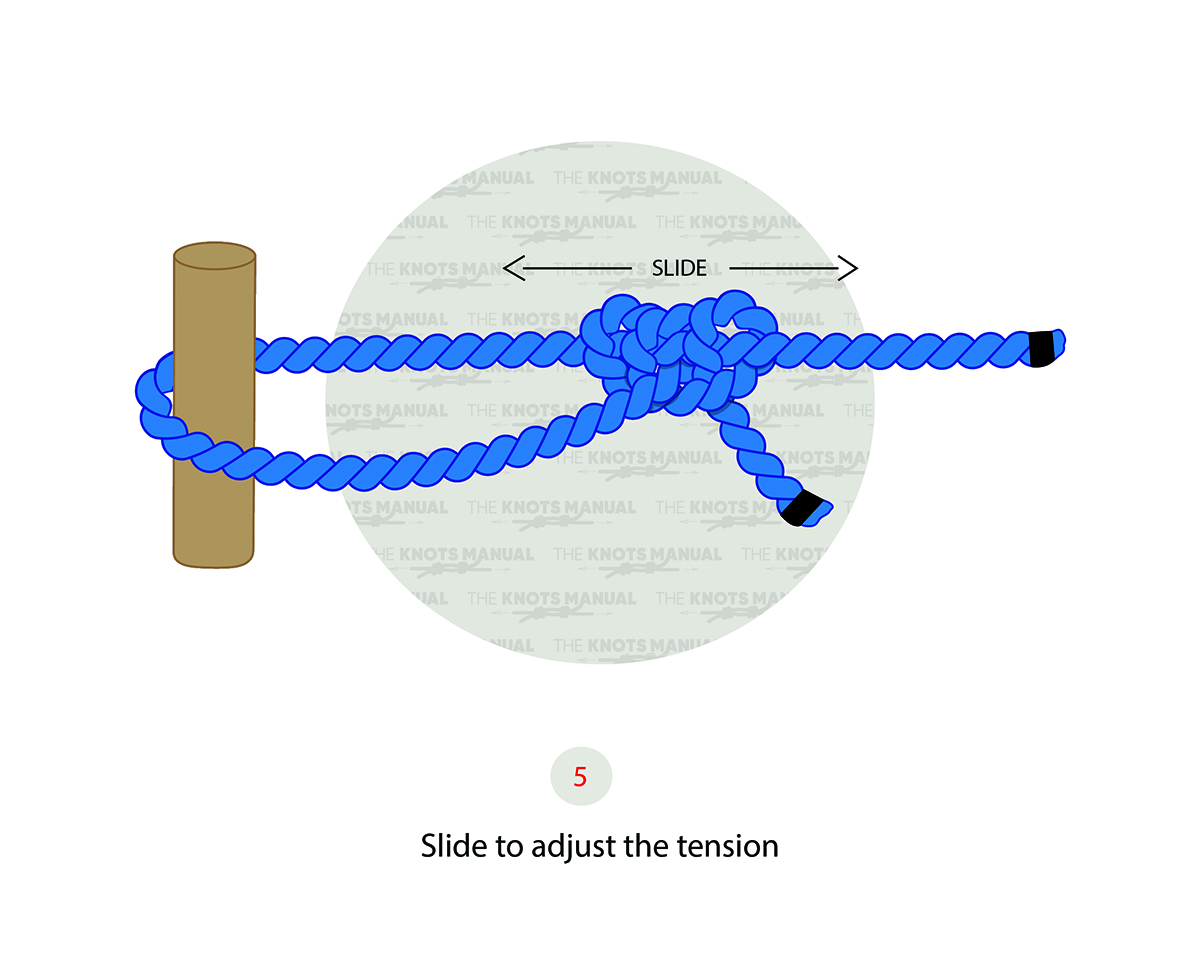
Slide the knot across the rope to adjust the tension.
* Another way to finish this knot is by reversing the direction of the half hitch in step 3. Doing so removes the rope’s torsion and prevents the knot from twisting. *
* For easier untying, consider finishing the knot with a slippery half hitch. *
How To Tighten A Rope With A Taut Line Hitch
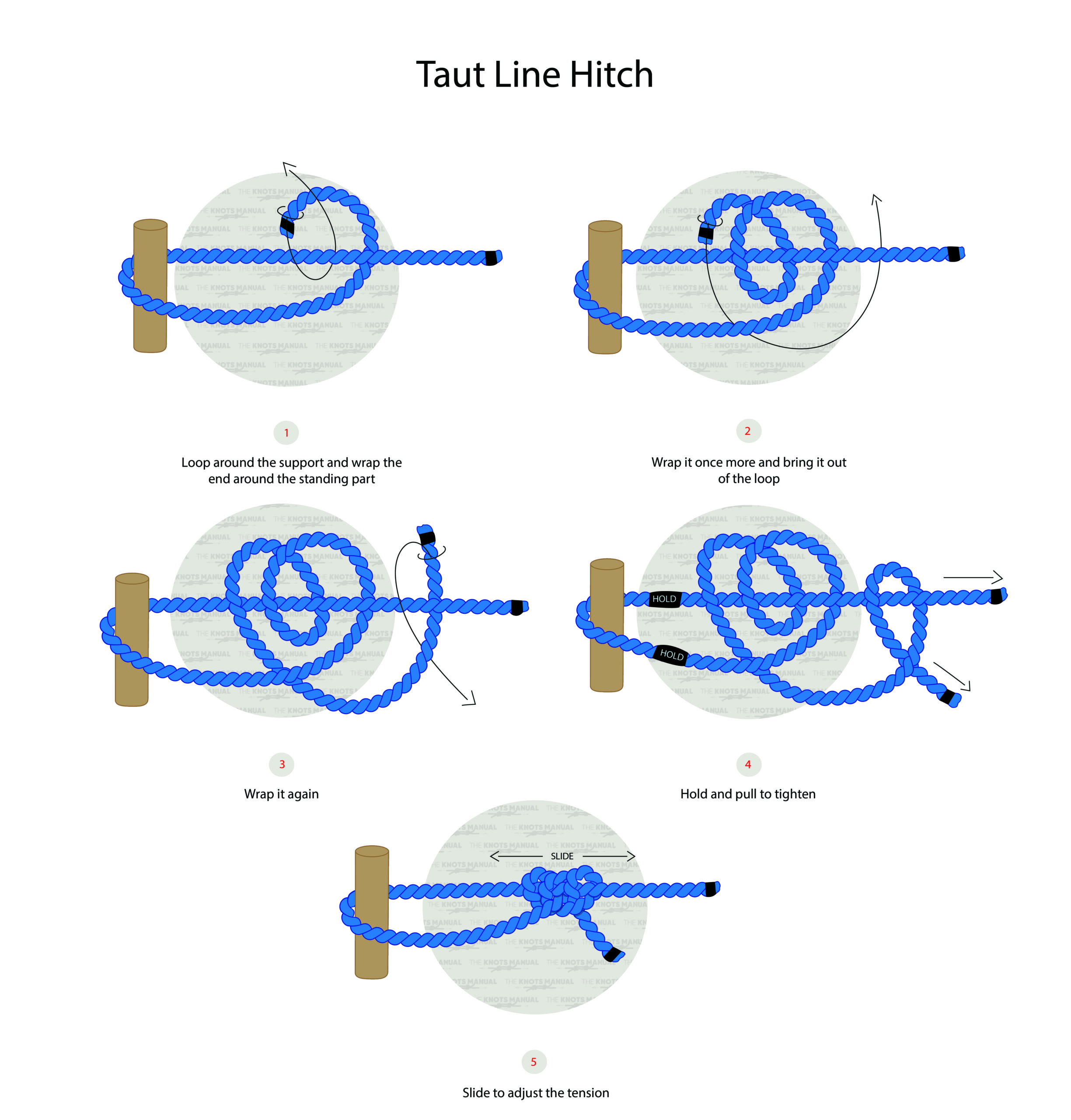
To tighten a line, first ensure that a load is attached to the rope.
Second, grab the standing part with one hand inside the loop. Then, pull the standing end toward the anchoring object. Hold the knot in the opposite hand.
Notice how slack forms within the loop. The knot will slide away from the anchor object because it’s taking up the slack. As this happens, the loop gradually gets larger.
To loosen the line, slide the knot toward the anchoring object. The loop decreases in size, and the rope’s standing part lengthens.
Uses Of The Taut Line Hitch
The taut line hitch is mainly used in outdoor situations, like camping and climbing trees. It’s great for securing loads and is highly adjustable.
Camping
Taut line hitches are helpful for securing tent guy lines. Adjustments are quick and easy since the knot slips freely across the line but jams with a load.
The Boy Scouts of America recommends the taut line hitch. It is their “go-to” adjustable sliding knot.
Other Uses
Other common uses of the taut line hitch include:
- Setting up hammocks
- Climbing & mountaineering
- Tying down aircraft
- Adjusting moors
- Securing loads, especially on vehicles
- Cutting trees
Knots Similar To The Taut Line Hitch
Rolling Hitch: These knots are basically taut line hitches with slight modification. Rolling hitches don’t secure to their standing part like the taut line hitch does. Rolling hitches are most often used to attach a smaller rope to a larger one with a parallel line of pull.
Midshipman’s Hitch: These knots are not as easy to adjust as the taut line hitch, but they are more secure. While tying the second wrap, the midshipman’s hitch forms an “awning hitch” not present in the taut line hitch. The awning hitch takes the strain off the rope while tying the last half hitch.
Munter Hitch: These knots are adjustable and often used as friction devices. They are tied around a round object like a pole, pipe, or carabiner. Rock climbers most often use them for belaying and rappelling. The downside of these knots is that they often cause the rope to kink or twist.
Girth Hitch: These hitches are used to attach a sling to another sling, ring, or bar. They are not very strong and can weaken a sling by up to 50%.
Buntline Hitch: These hitches are very secure and unlikely to come undone. They are useful on sailboats because they tighten the more a sail jerks and shakes. Their earliest uses were for attaching buntlines to square sails.
Trucker’s Hitch: These knots are less likely to slip than the taut line hitch and are great for taking loads.
FAQs
How Strong Is The Taut Line Hitch?
The taut line hitch is moderate in strength, security, and stability. On a scale of 1-5, this hitch gets a “3.”
These knots are stronger than many others won’t weaken the rope much. They are moderately secure when tied. They aren’t likely to come undone while holding a normal or abnormal load.
Is The Midshipman’s Hitch Or The Taut Line Hitch Better?
The midshipman’s hitch is better when more security is needed. The “awning hitch” tied into the knot takes the strain off the rope and makes it more secure.
The taut line hitch is better when more adjustability is needed. It is not as secure as the midshipman’s hitch, but it slips much easier, which is ideal for adjustments.
